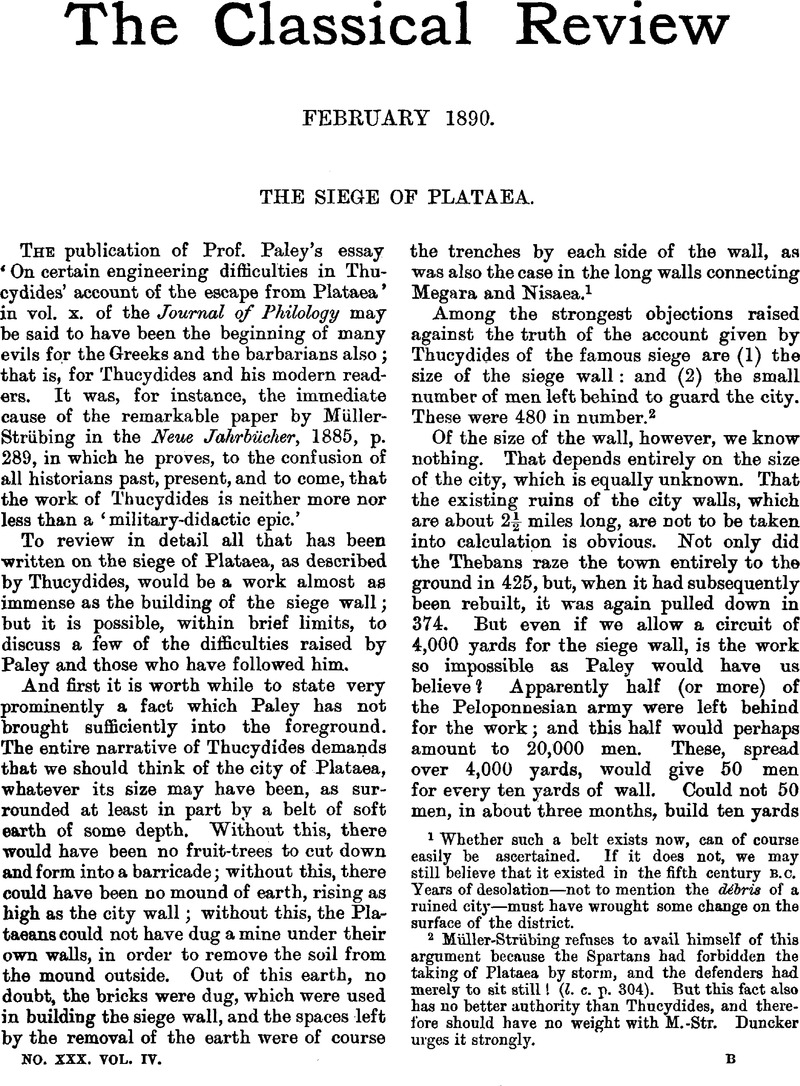No CrossRef data available.
Article contents
Abstract

- Type
- Review Article
- Information
- Copyright
- Copyright © The Classical Association 1890
References
page 1 note 1 Whether such a belt exists now, can of course easily be ascertained. If it does not, we may still believe that it existed in the fifth century B.C. Years of desolation—not to mention the débris of a ruined city—must have wrought some change on the surface of the district.
page 1 note 2 Müller-Strübing refuses to avail himself of this argument because the Spartans had forbidden the taking of Flataea by storm, and the defenders had merely to sit still! (I. c. p. 304). But this fact also has no better authority than Thucydides, and therefore should have no weight with M.-Str. Duncker urges it strongly.
page 2 note 1 The Athenians had 40 ships at Mitylene, and 1,000 hoplites under Paches: i.e. about 9,000 men, they had to blockade the city by sea, while building the wall (Thuc. iii. 2, 18). The siege works at Nisaea occupied a day and a half (Thuc. iv. 69), at Delium about three days (iv. 90).




